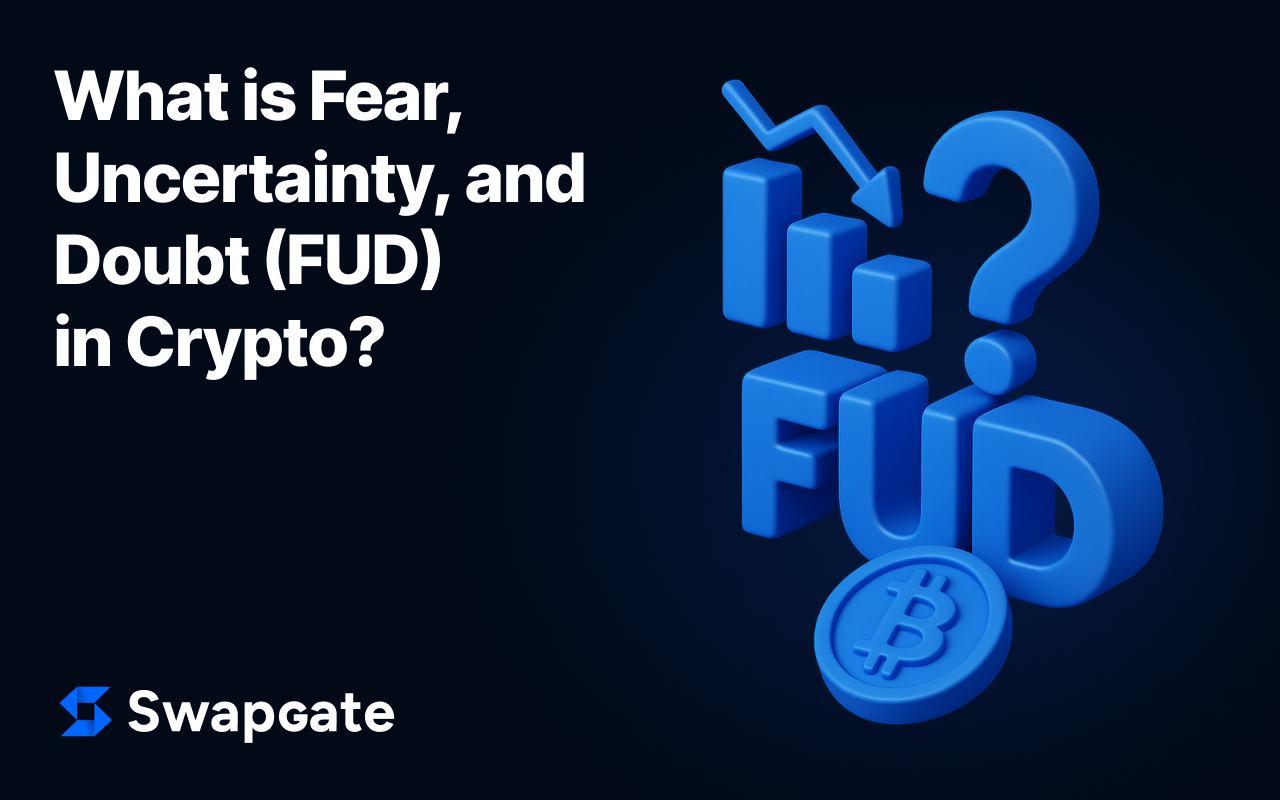
Crypto trades 24/7, headlines move at the speed of X (Twitter), and a single rumor can vaporize billions in minutes. That cocktail makes “FUD”—fear, uncertainty, and doubt—a permanent character in every market cycle. This article explains what FUD is, why crypto is especially prone to it, how it warps prices and confidence, what surveys say about investor reactions, and the practical habits you can adopt to stay grounded when timelines turn toxic.
Understanding the Meaning of FUD in Crypto
What is a FUD and how it differs from real risk
FUD is the deliberate (or careless) spread of negative, questionable, or false information to manipulate perception and behavior. In crypto, that often means sensational tweets about “imminent bans” or “exchange insolvency” designed to scare holders into selling. Real risk, by contrast, is verifiable: a published enforcement action, an on‑chain exploit with confirmed losses, or audited financials showing insolvency. The line is evidence—FUD rarely brings it.
FUD meaning in crypto vs. traditional finance
The tactic predates Bitcoin—IBM and Microsoft were accused of using FUD crypto in tech wars decades ago—but crypto magnifies it. Traditional finance has disclosure rules, regulated PR, and market halts. Crypto does not, so the same tactic that once targeted competitor software now targets tokens and exchanges, often with far less accountability.
Why crypto is more vulnerable to FUD
Three structural reasons:
- Information asymmetry & opacity—many projects lack audited financials or clear governance.
- Always‑open markets—no overnight pause for facts to catch up.
- Retail‑heavy user base—less institutional research, more social‑media driven narrative. Pew finds 63% of U.S. adults have little to no confidence in crypto’s safety; shaken trust makes investors quick to sell on scary headlines.
The Emotional Triggers Behind FUD
Fear of loss and uncertainty
Behavioral finance tells us loss aversion hits twice as hard as gains—people hate losing more than they love winning. In crypto, that’s amplified by extreme swings and anecdotal horror stories. Unclear regulation, complex tech, and opaque treasuries create uncertainty gaps FUD can fill. The SEC’s investor alert explicitly warns that crypto assets can be “exceptionally volatile and speculative,” a perfect breeding ground for fear.
How FUD Impacts Market Behavior
Price volatility and panic selling
Negative narratives often precede sharp sell‑offs. When China reiterated a Bitcoin ban in May 2021, BTC dropped as much as 20% within hours before sliding further—classic FUD fuel where ambiguous policy headlines met reflexive selling. Media hype and regulatory news are consistently cited drivers of crypto’s outsized volatility.
Loss of investor confidence
FUD doesn’t just move candles; it erodes trust. In Pew’s 2024 survey, only 5% of U.S. adults were “very confident” in crypto’s reliability; nearly two‑thirds expressed little or no confidence. Earlier, 46% of American crypto users said their investments performed worse than expected—disappointment that primes them to believe the next doom thread.
Survey Insights: How Investors React to FUD
Public polling shows a pattern: high volatility plus recurring scandals lowers confidence and raises sensitivity to negative news. BIS researchers argue the sector’s lack of clear accountability makes fraud and scams easier, so retail investors become both skittish and susceptible. In practice, that means many sell too late (after panic has spread) or buy rumors without checking sources—both classic FUD crypto traps.
Strategies to Protect Against FUD in Crypto
Do your own research (DYOR)
Treat every dramatic claim like a courtroom statement: who said it, where’s the evidence, and can you corroborate on‑chain or via official filings? The SEC notes that generic “DYOR” disclaimers don’t absolve bad actors, but the principle is sound—verify contracts, audits, and addresses before reacting.
Checklist:
- Cross‑read multiple reputable outlets (CoinDesk, Bloomberg, official regulator sites).
- Check on‑chain data (Etherscan, Nansen, Santiment) for whale moves or exploit signatures.
- Look for primary documents: court filings, regulator orders, team multisig announcements.
Use dollar-cost averaging (DCA)
DCA—investing fixed amounts at set intervals—helps neutralize emotional timing errors. Binance explains DCA smooths the impact of volatility and removes the urge to “go all‑in” or “rage sell” on a scary headline. Here’s an article on Why Use a Crypto Profit Calculator.
Set custom orders and alerts
Limit orders, stop‑losses, and price alerts automate discipline. Instead of panic‑clicking during a FUD wave, your plan executes without emotion. Many exchanges and charting tools (TradingView, Binance, Coinbase Advanced) let you pre‑define exits.
Follow trusted sources, not hype
Curate your feed. Mute anonymous accounts posting “insider” doom. Prioritize official project channels, regulator announcements, and analysts who cite data. Sentiment dashboards (e.g., Santiment’s “hot social trends”) can help you see when a narrative is peaking so you don’t chase or flee at the worst moment.
Conclusion
FUD will never vanish from crypto; the incentives to spread it—and the emotions that empower it—are baked into an always‑on, retail‑heavy market. But understanding the mechanism makes it far less dangerous. Know the definition, separate rumor from risk with evidence, lean on structured strategies like DCA and preset orders, and consume information with a skeptic’s eye. Do that, and “fear, uncertainty, and doubt” becomes just another signal to analyze—not a trigger to abandon your plan.